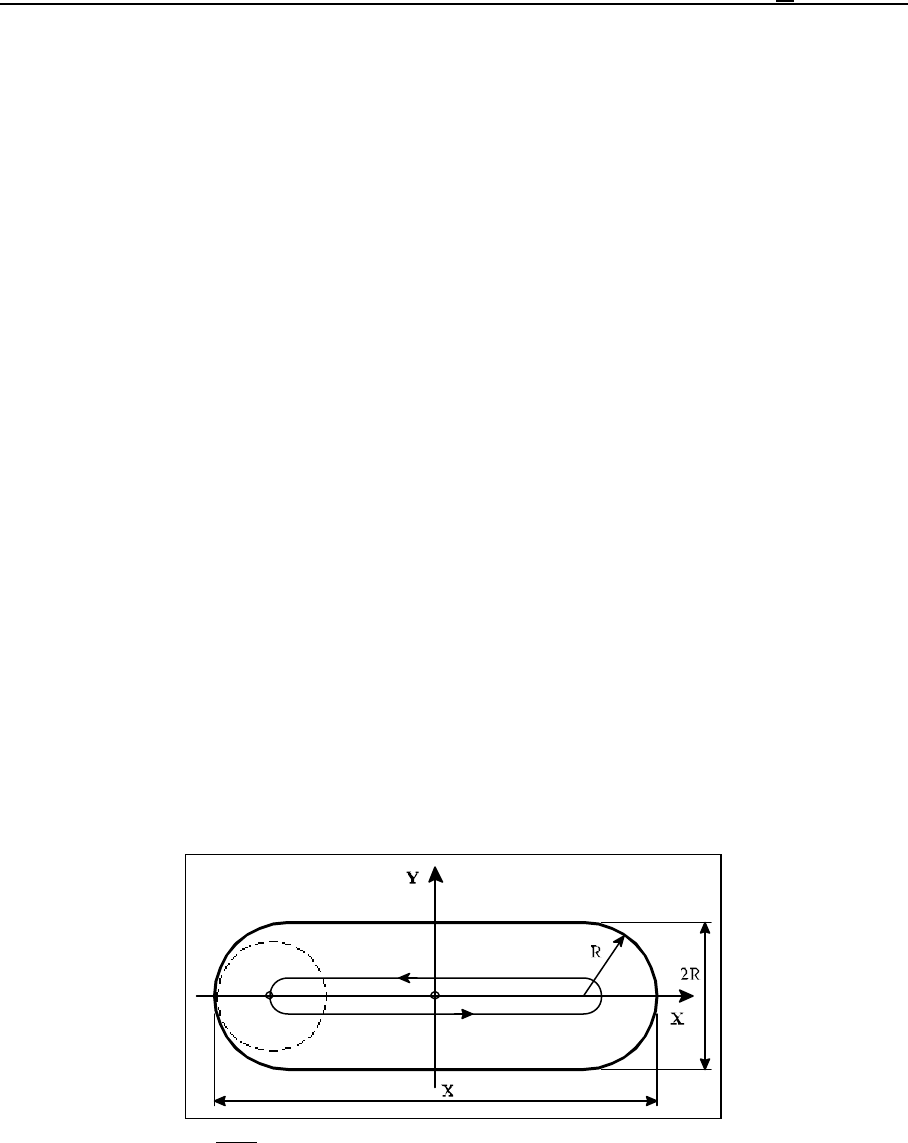
20 Custom Macro
199
Fig. 20.18-2
E = width of cutting, in percent of milling diameter
with + sign, machining in counter-clockwise sense,
with – sign, machining in clockwise sense.
Two types of information can be specified at address E. The value of E defines the width of cutting in
percent of milling diameter. Unless it is specified, the control will automatically assume +83%. The
control can modify the data specified at address E, depending on the width of pocket, in order to obtain
a uniform cutting in milling a particular level. Such a modification may, however, be a reduction only. The
sign of address E will define the direction of milling. When E+, i.e., it is positive, the machining will be
carried out in counter-clockwise sense, if it is E–, i.e., negative, the machining will be carried out in
clockwise sense.
Q = depth of cut
The depth of cut can be specified at address Q in the applicable units of measure (mm or inches).
Depending on the depth of pocket, the control may override the program value in order to obtain a
uniform distribution of cuts. Such a modification may, however, be a reduction only.
F = feed
The feed applied in the cycle can be specified at address F. Unless F is given a value, the modal F value
will be adopted. 50% of the F value will be applied
– when a level begins to be milled, and a depth of cut (Q) is drilled,
– when milling the pocket longitudinally as long as the Q is loaded on both sides.
M S T = function
A function M, S, T can be specified in the block calling the procedure of pocket milling, which will be
executed by the control prior to commencement of milling.
Degenerated cases of cavity milling:
Unless the width of pocket has been specified, the radius of the pocket's corners will be taken twice
for the width of pocket.


















